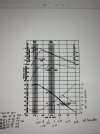AA5Bman
Line Up and Wait
- Joined
- Jun 14, 2009
- Messages
- 821
- Display Name
Display name:
He who ironically no longer flies an AA5B
The conventional wisdom on engine temperatures seems to have fluctuated a bit over the years, with 380* being the gold standard for a long time as pushed (I think) by the Savvy, GAMI, LOP crowd, which I have generally subscribed to. But then it seemed that 400* might be fine as long as you were sufficiently rich, and I believe some of the Lycoming engines are marked as high as 450* (don’t quote me on this).
The question comes up because I’m kinda-sorta kicking around the idea of finally buying my bucket-list aircraft, a turbo’ed Cessna 206 (continental TSIO-520). I went to look at one recently and it had a fresh (100hr) engine, and it ran hot (at least to me): 400-405* consistently through all phases of flight, even cruise. This kind of freaked me out and I’m curious what you all think about this. I know and have been warned that turbocharged engines run hotter, but what is acceptable? This plane was flown by a mechanic also so he would theoretically know, and it didn’t bother him at all, saying that an NA engine running that hot would be doing so because it was substantially too lean. A turbo’ed engine could run that hot and still be safely rich or LOP, just because turbo’ed engines produce more heat. One is at risk of detonation, one is not. At least this was the logic.
So… not to rip open a whole new EGT/CHT/LOP/ROP debate, but what is the current thinking on temps? And does anyone have any experience with what is normal for a TSIO-520?
The question comes up because I’m kinda-sorta kicking around the idea of finally buying my bucket-list aircraft, a turbo’ed Cessna 206 (continental TSIO-520). I went to look at one recently and it had a fresh (100hr) engine, and it ran hot (at least to me): 400-405* consistently through all phases of flight, even cruise. This kind of freaked me out and I’m curious what you all think about this. I know and have been warned that turbocharged engines run hotter, but what is acceptable? This plane was flown by a mechanic also so he would theoretically know, and it didn’t bother him at all, saying that an NA engine running that hot would be doing so because it was substantially too lean. A turbo’ed engine could run that hot and still be safely rich or LOP, just because turbo’ed engines produce more heat. One is at risk of detonation, one is not. At least this was the logic.
So… not to rip open a whole new EGT/CHT/LOP/ROP debate, but what is the current thinking on temps? And does anyone have any experience with what is normal for a TSIO-520?

